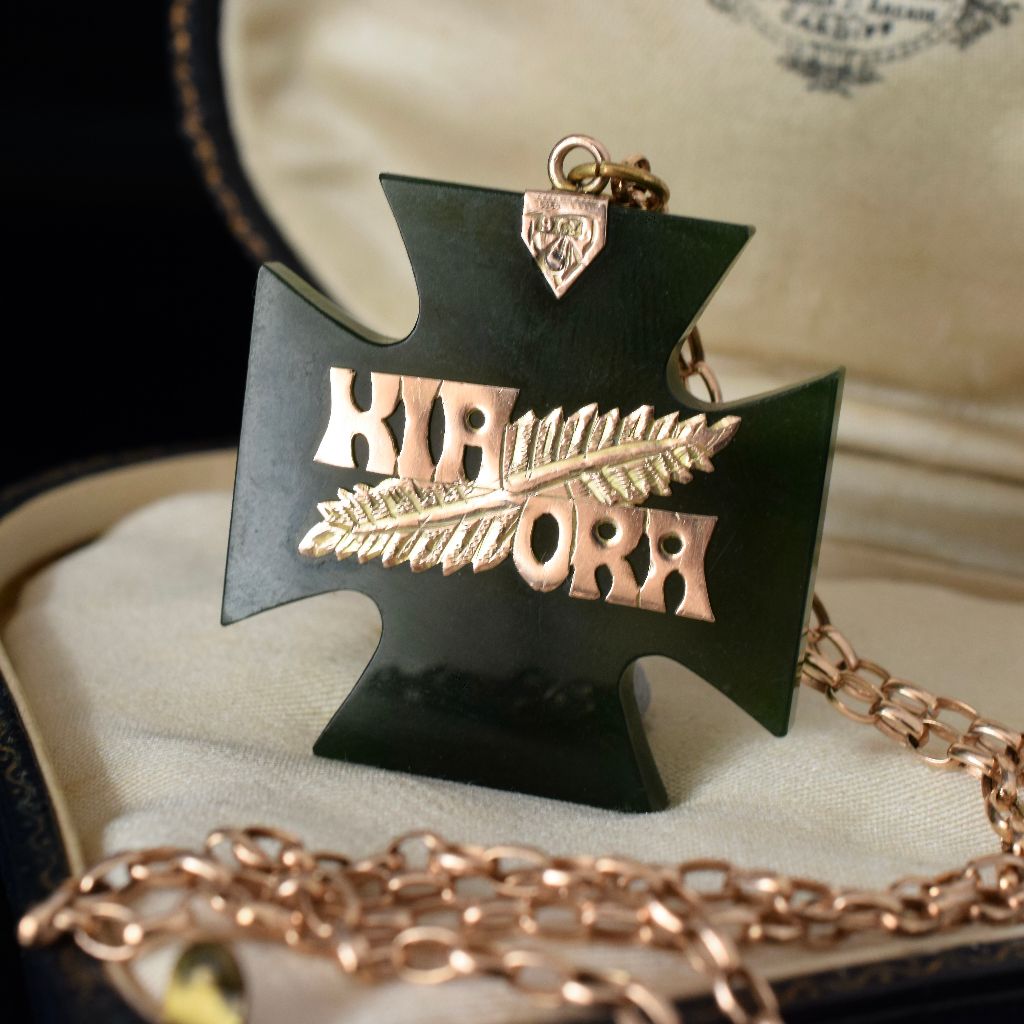
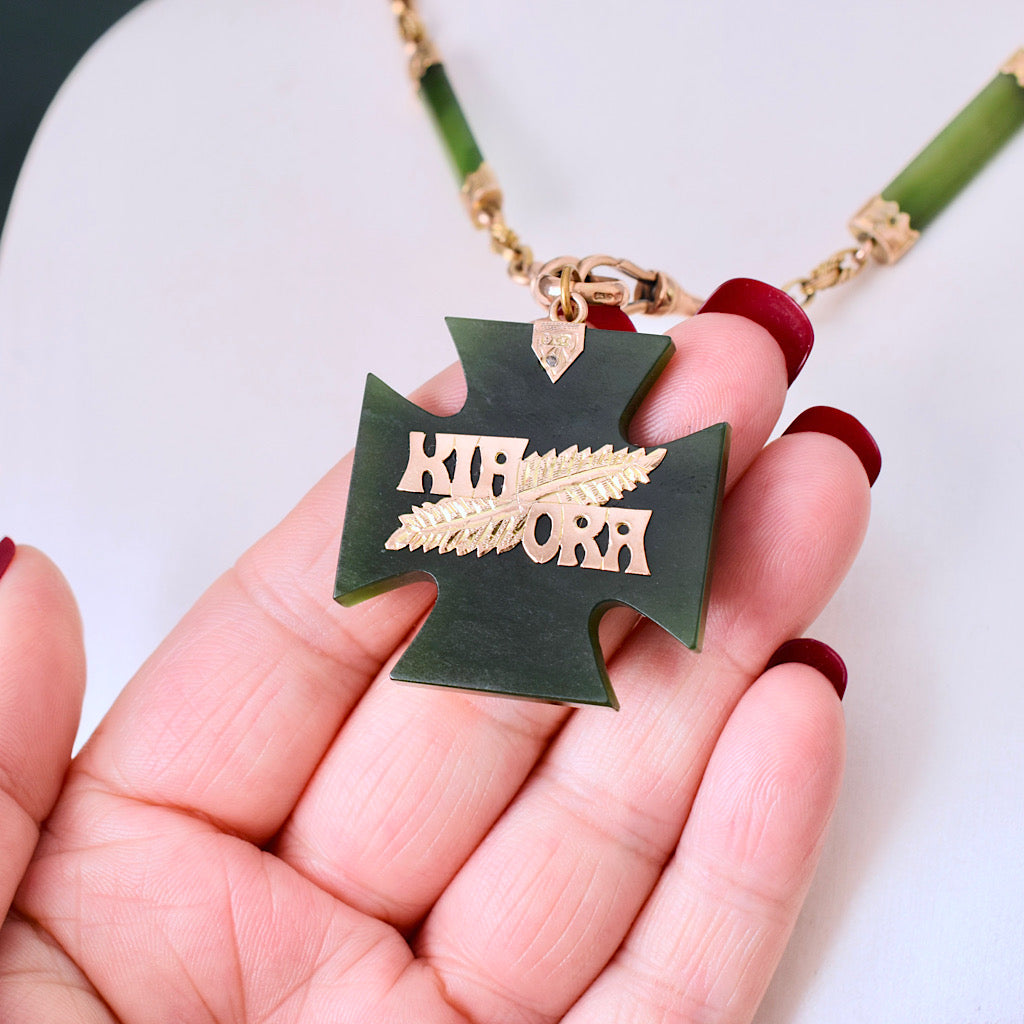
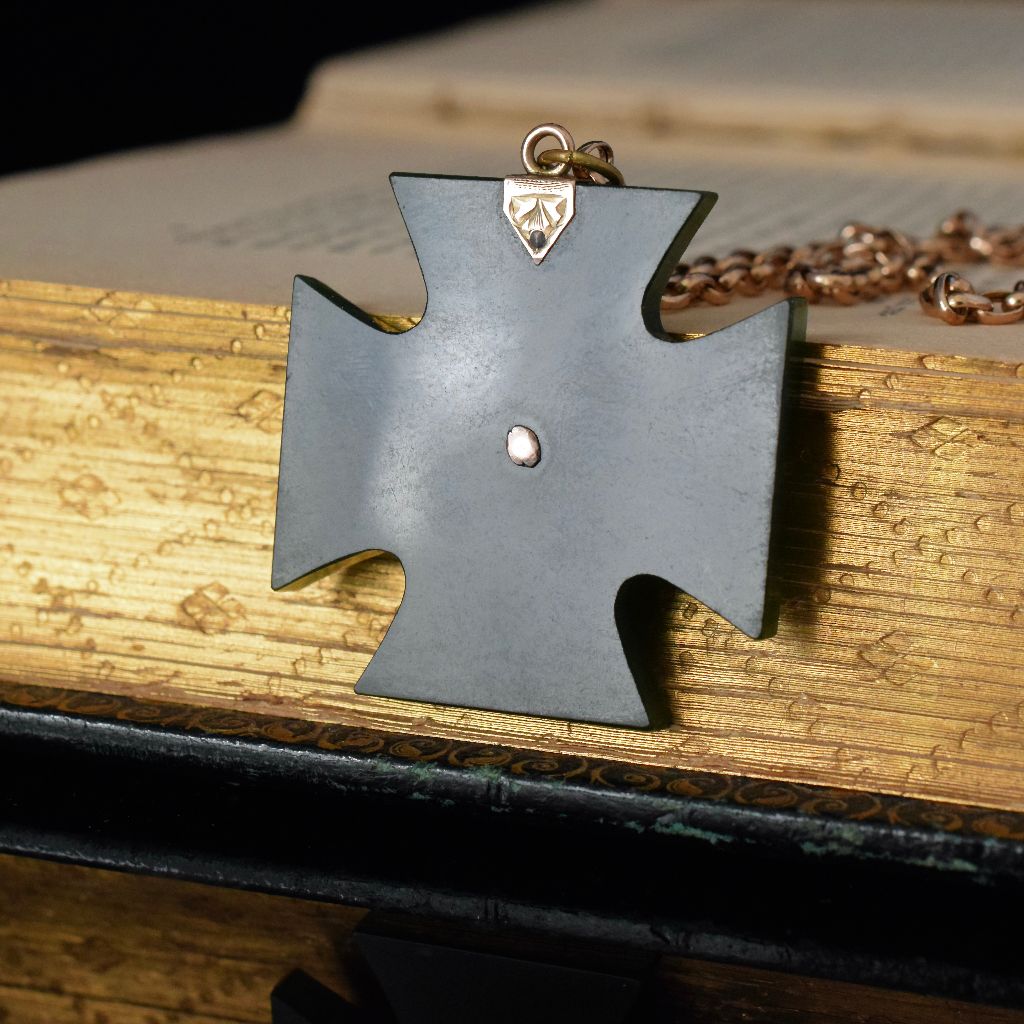

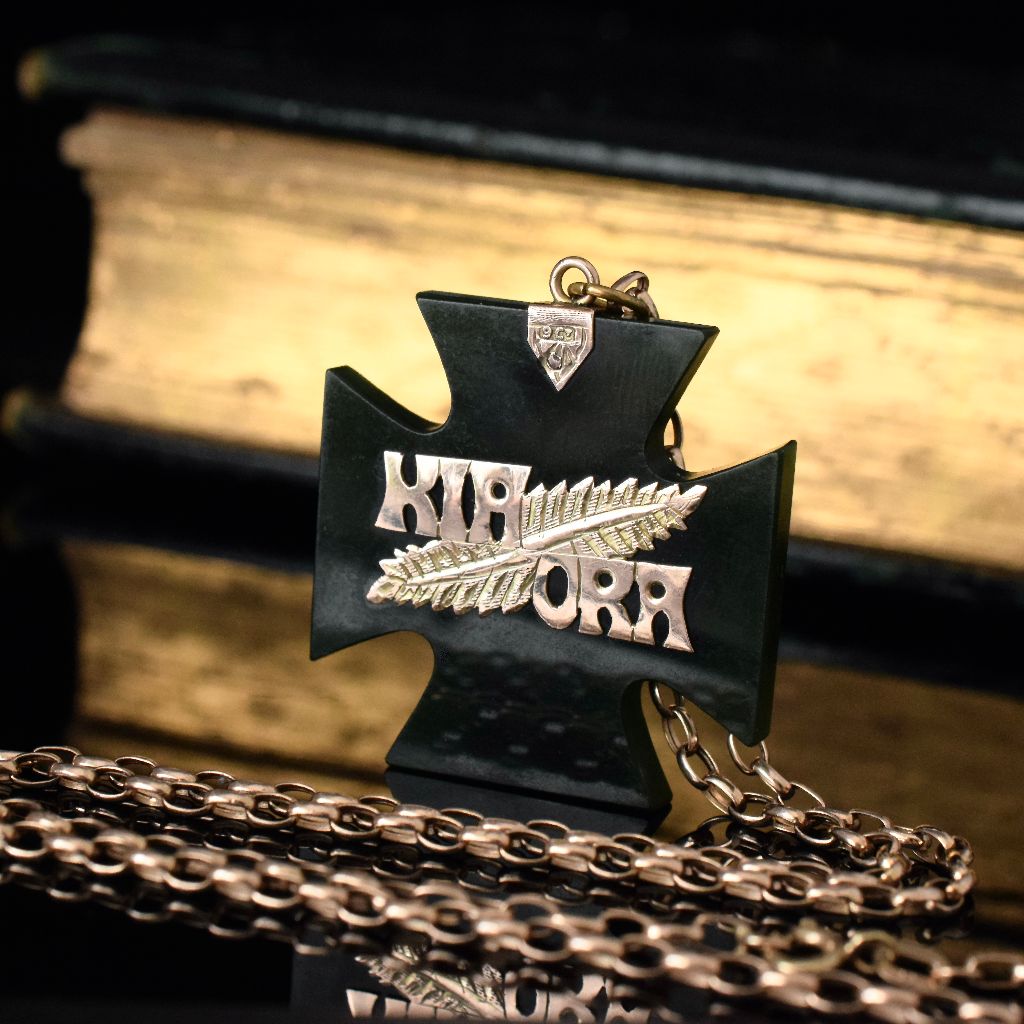
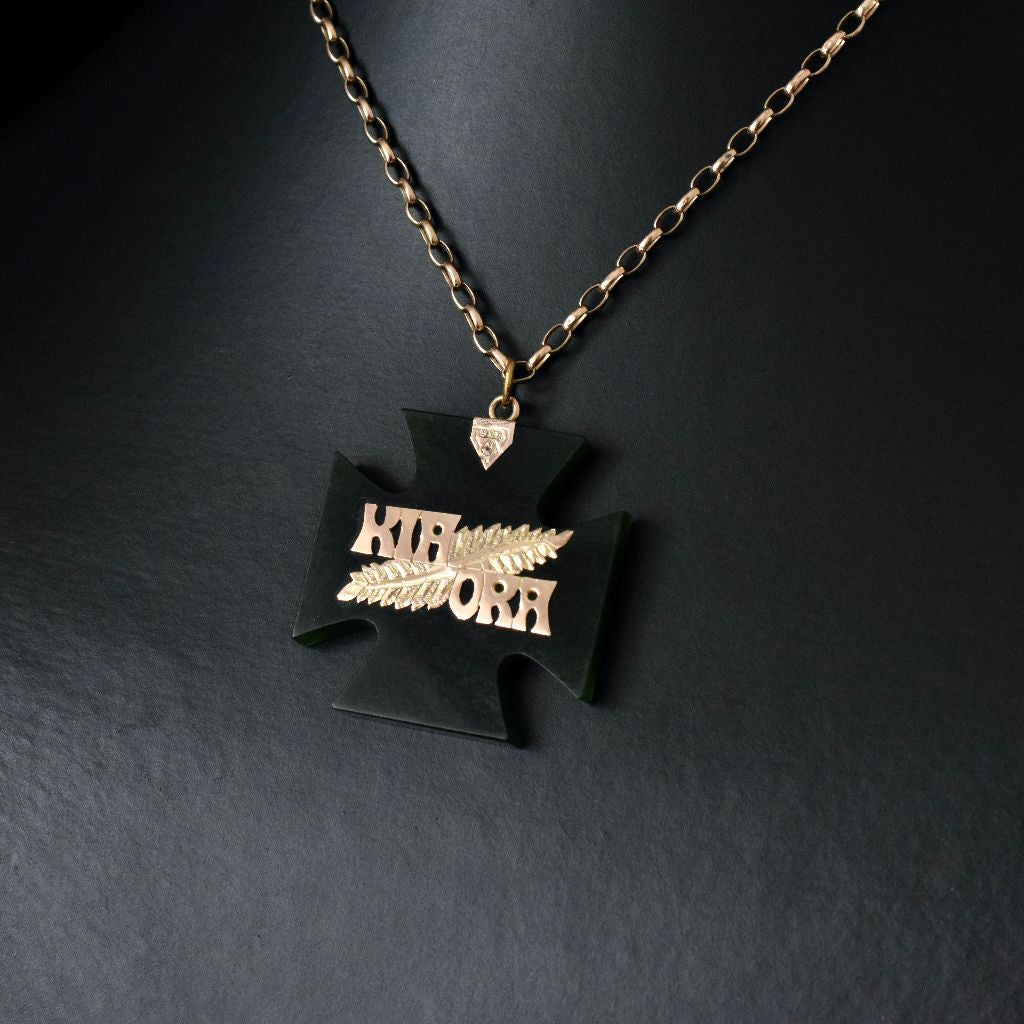
Antique Nephrite Jade ‘Pounamu’ 9ct Gold ‘Kia Ora’ Pendant Circa 1910
And finally, the silver fern acted as a food source. The pith was a great source of starch and the young fronds were also eaten. As a result the fern symbol has always had an important meaning to Maori, and can be commonly seen in traditional Maori carving.
Please note boxes are for display only unless otherwise stated.
Laybys & Hold Policy
Do you have your eye on a fabulous piece but need some extra time to
pay? At Graisons, we offer suitable layby terms for pieces priced $400 AUD and above. Contact us for more details.
Purchase Guide & Refund Policy
For information regarding our Purchase Guide & Returns Policy, please click here
Shipping & Delivery
Free Complimentary Express Shipping: Australia & Select International Countries.
We are pleased to offer free complimentary express postage, fully insured with tracking and signature on delivery using Australia Post.
For all international purchases, a third party postal company will complete the final stage of delivery.
Orders are dispatched within one-two business days of purchase. Once complete, a tracking number will be forwarded to you via email notification.
We are currently shipping to the following international countries:
UK, USA, CANADA, SINGAPORE, NEW ZEALAND, HONG KONG.
PLEASE NOTE: Any duties imposed by countries for importing our items are the buyers responsibility. Please contact your local customs agency if you wish to discuss potential rates and fees.
Caring For Antique & Vintage Jewellery
We absolutely pride ourselves on sourcing the best quality pieces for our customers, with many of our items valued by our registered jeweller/gemologist.
Our collection consists of pieces that are of antique and vintage condition, which means that all our items are secondhand and used. Customers are not purchasing 'new', 'perfect' and 'unworn items', and as such, should expect wear and imperfection. Any condition issues are always extensively mentioned in the condition summary.
Please do not hesitate to ask questions prior to purchase. It is the responsibility of the purchaser to ensure that these descriptions and pictures are carefully viewed and any questions are asked prior to the transaction taking place.
Please refer to our guide, Caring For Antique & Vintage Jewellery for more details.
Your Purchase: What Is Included?
Your purchase will be lovingly packaged in our custom made, eco-friendly Graisons Fine Jewellery Jewel box tied with ribbon inside our custom made packaging/mailing box.
For added safety and security, all purchases are shipped inside an Australia Post medium sized mailing box.
If your item includes an independent valuation, the physical certificate will be included.
Choose options





